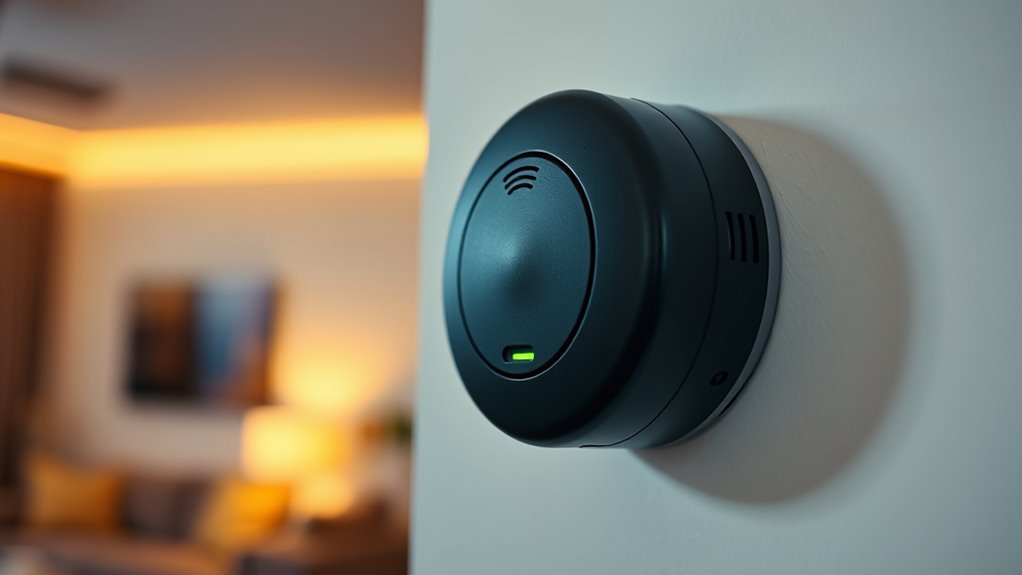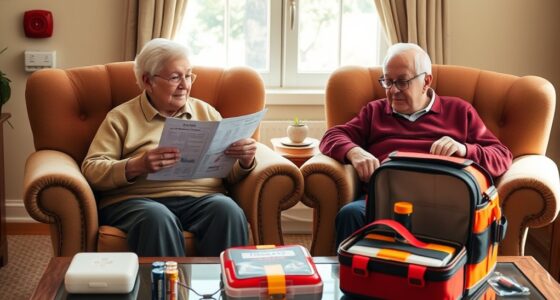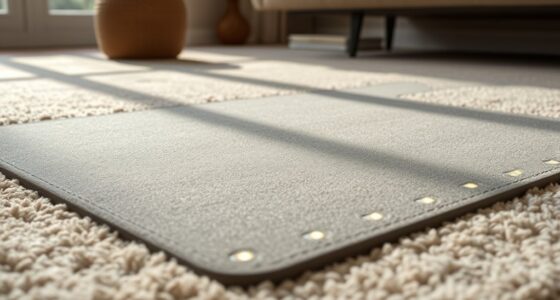Carbon monoxide detectors are essential because they alert you to the presence of a colorless, odorless gas that can cause serious health issues or death without warning. Faulty appliances, poor ventilation, and enclosed engine use increase your risk. Installing detectors near bedrooms and on each level, maintaining them properly, and knowing how to respond to alarms can save lives. If you keep exploring, you’ll discover how to choose, install, and maintain these crucial safety devices effectively.
Key Takeaways
- CO is an odorless, invisible gas that can cause sudden illness or death without warning.
- Detectors provide early alerts, allowing immediate action to prevent poisoning.
- Proper placement near sleeping areas ensures critical protection during rest.
- Regular testing and maintenance keep detectors functioning accurately over time.
- Installing multiple detectors on each level enhances comprehensive home safety.
Understanding the Risks of Carbon Monoxide in Homes
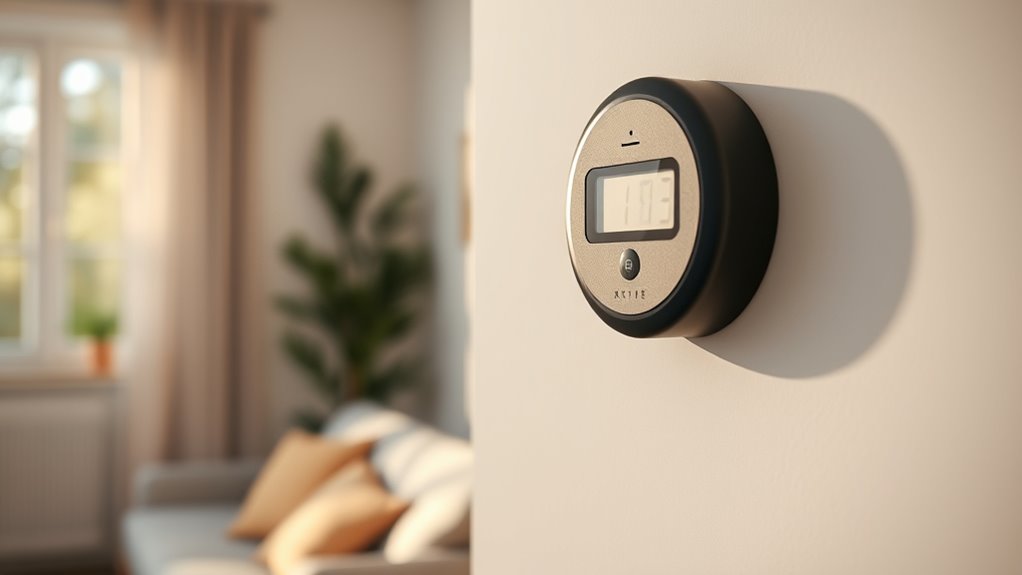
Understanding the risks of carbon monoxide in homes is essential because this colorless, odorless gas can cause serious health issues without any warning. Exposure to carbon monoxide, or CO poisoning, can lead to headaches, dizziness, nausea, and even unconsciousness or death. Properly installed necessary cookies for safety devices like CO alarms can help detect these invisible dangers early. Installing carbon monoxide detectors in key areas of the home is a crucial step to ensure early warning and prevent poisoning incidents. Common sources of carbon monoxide include faulty gas appliances, fireplaces, and running engines in enclosed spaces. Poor ventilation and malfunctioning appliances increase indoor CO levels, degrading air quality and raising poisoning risks. Regular maintenance and inspections of appliances are vital for preventing dangerous leaks. Since CO is a poisonous gas that’s hard to detect without detectors, awareness of its sources and symptoms is indispensable. Additionally, technological advancements in home safety devices have improved detection capabilities, making it easier to identify CO leaks before they become life-threatening. The integration of sensor technology with smart home systems can provide real-time alerts, significantly enhancing safety measures. Maintaining appliance safety standards and ensuring proper ventilation are essential for protecting your family from dangerous buildup of this invisible threat.
How Carbon Monoxide Detectors Protect Your Family
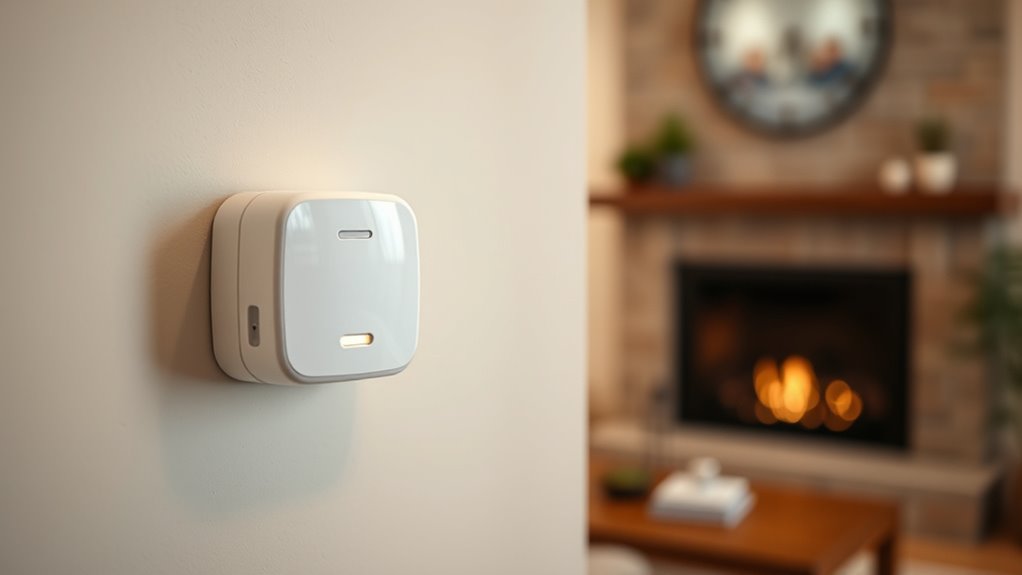
Carbon monoxide detectors play a critical role in safeguarding your family by providing early warnings of dangerous CO leaks before symptoms appear. These detectors alert you to carbon monoxide, a colorless, odorless gas that can cause CO poisoning if undetected.
By installing detectors in key areas, especially inside bedrooms and on every home level, you ensure all family members receive timely alerts. This early warning helps you take immediate action, reducing the risk of poisoning and enhancing your home safety.
Proper detector placement is essential for fire prevention and overall protection. Regular testing and replacing detectors maintain their effectiveness, ensuring you’re always prepared.
With alarms sounding at the first sign of CO, you actively protect your loved ones from unseen dangers.
Proper Placement and Installation of CO Detectors
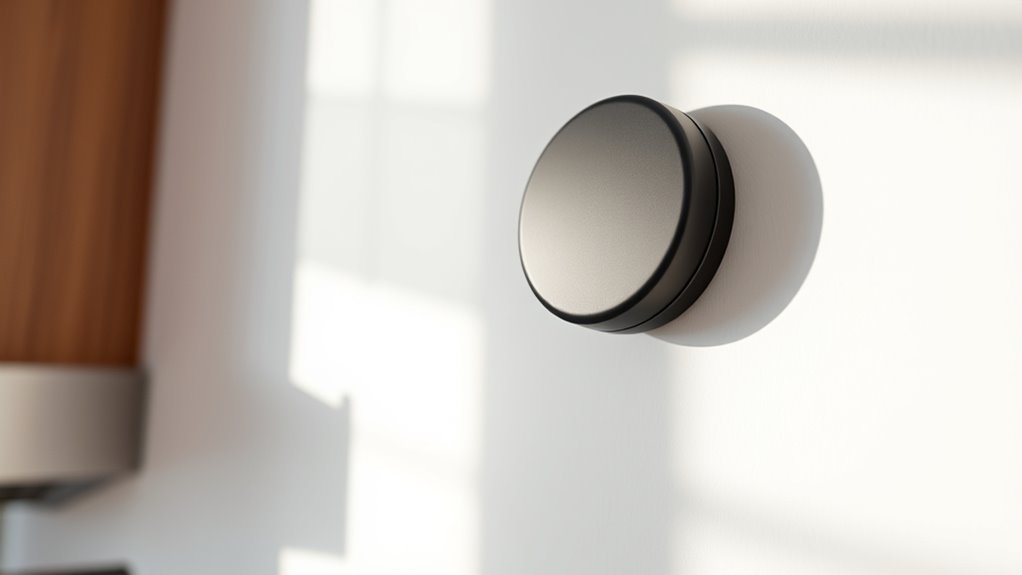
To guarantee your carbon monoxide detectors provide reliable alerts, proper placement and installation are essential. You should install detectors on each level, especially near sleeping areas, to ensure prompt monitoring. Mount detectors on the wall about five feet above the floor or on the ceiling, following manufacturer guidelines, to optimize detection of carbon monoxide levels. Keep them at least 15 feet away from fuel-burning appliances to prevent false alarms. Position detectors away from vents, windows, or high-humidity areas for accurate readings. Use the table below to help with correct placement:
| Location | Mounting Height |
|---|---|
| Near sleeping areas | About five feet above the floor |
| Away from vents | On the wall or ceiling, per manufacturer guidelines |
| Near fuel appliances | At least 15 feet away |
| High humidity areas | Keep away for accurate monitoring |
Proper placement maximizes safety and effective detection. In addition, ensuring that detectors are tested regularly and maintained according to manufacturer instructions is crucial for ongoing reliability. Regularly checking detector batteries is also important to maintain alertness and safety.
Recognizing and Responding to CO Alarm Signals

Recognizing the different sounds your CO alarm makes is essential for your safety. Carbon monoxide alarms use specific alarm signals to alert you to danger.
Knowing your CO alarm sounds ensures immediate safety response and effective carbon monoxide detection.
For example, detector beeps—four quick beeps followed by a pause—indicate dangerous CO levels requiring immediate response.
A single beep per minute signals low batteries, so you should replace them promptly.
Five beeps per minute mean the alarm has reached its lifespan warning and needs replacing.
Understanding the alarm pattern helps you interpret the situation accurately. Being aware of credit scores and other financial terms can also help you make informed decisions about your safety investments, such as purchasing high-quality detectors.
Additionally, knowing the technology used in alarms can help you select the most reliable and accurate carbon monoxide detectors for your home. Recognizing alarm signal patterns can further enhance your safety preparedness and ensure prompt action in case of emergencies.
Maintaining and Replacing Your Carbon Monoxide Detectors
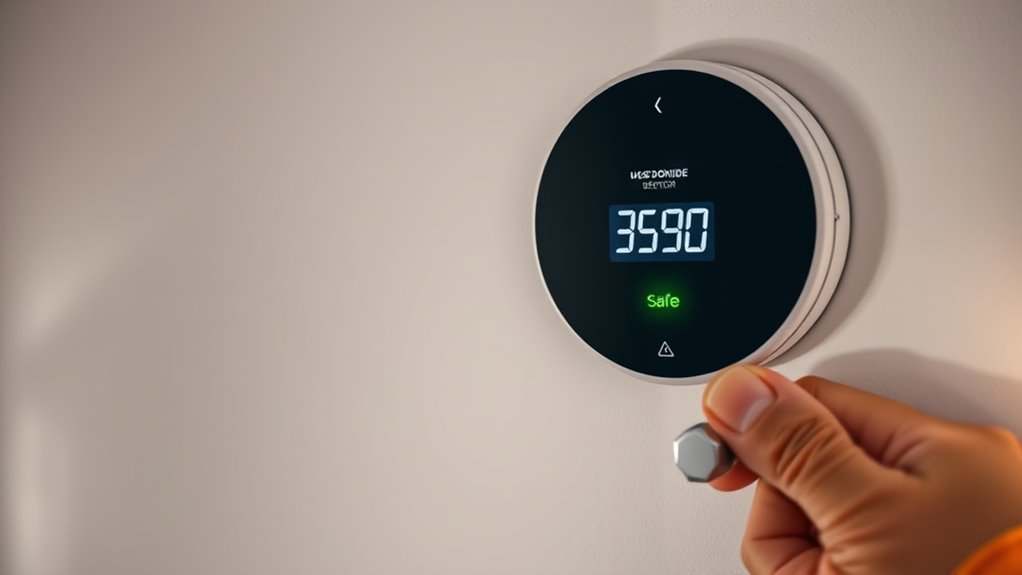
Regular maintenance and timely replacement are vital to keep your carbon monoxide detectors functioning effectively. To maintain sensor accuracy and guarantee reliable early warning, test your detectors monthly by pressing the test button. Additionally, incorporating essential oils for air quality can help support a healthier indoor environment. Replace the batteries at least twice a year or immediately if you hear a low-battery beep. Follow the manufacturer’s instructions for your specific detector’s replacement schedule, typically every 5 to 7 years, to avoid reduced sensor performance. Proper maintenance also involves cleaning the detector regularly and replacing it when it reaches the end of its detector lifespan. Staying proactive with these steps helps guarantee your carbon monoxide detectors remain dependable, providing essential protection for you and your loved ones in case of a CO leak. Regularly checking for advanced sensor technology can also enhance detection accuracy and reliability. Incorporating predictive analytics for small business insights can also inform maintenance schedules and safety upgrades to optimize your home’s protection.
Moreover, staying informed about security measures in payment processing can help you make safer, more informed decisions about upgrades and safety measures.
Frequently Asked Questions
How Necessary Is a Carbon Monoxide Detector?
You’re asking how necessary a carbon monoxide detector is. It’s incredibly important because CO is invisible and odorless, so you won’t know if it’s present.
Installing a detector gives you an early warning, helping you evacuate and avoid poisoning.
Since many homes have potential CO sources like furnaces and water heaters, regular testing and proper placement of detectors are essential for your safety and peace of mind.
What Happens if You Don’t Have a Carbon Monoxide Detector?
Without a carbon monoxide detector, you’re risking serious danger since about 430 Americans die each year from CO poisoning, often without warning. CO is odorless and colorless, so you won’t notice its presence without an alarm.
If you lack a detector, you mightn’t realize there’s a problem until symptoms like headaches or dizziness appear—too late to prevent harm. Early detection is vital to avoid poisoning and save lives.
What Type of House Needs a Carbon Monoxide Detector?
You should have a carbon monoxide detector in any house with fuel-burning appliances, like gas furnaces, water heaters, or stoves.
If your home has an attached garage, it’s essential to install detectors near sleeping areas and the garage itself.
For multi-story homes, place detectors on each level, especially if you have fireplaces or wood stoves.
Homes with poor ventilation or older structures also need detectors to stay safe from CO buildup.
What Is the Benefit of Carbon Monoxide Detector?
You might think a carbon monoxide detector’s just a tiny device, but it’s your home’s lifesaver in disguise. It’s like having a silent guardian that alerts you to invisible, odorless danger before it turns deadly.
With one, you protect your family from sudden headaches, dizziness, or worse. Regularly maintaining it costs little but offers peace of mind, making your home safer and your loved ones truly protected from a silent, deadly threat.
Conclusion
By now, you see how vital carbon monoxide detectors are for keeping your home safe. Regularly check, maintain, and replace them to guarantee they work when you need them most. Proper placement and quick responses can save lives. So, aren’t your loved ones worth the extra peace of mind? Don’t wait until it’s too late—invest in a CO detector today and breathe easier knowing you’re protected.
